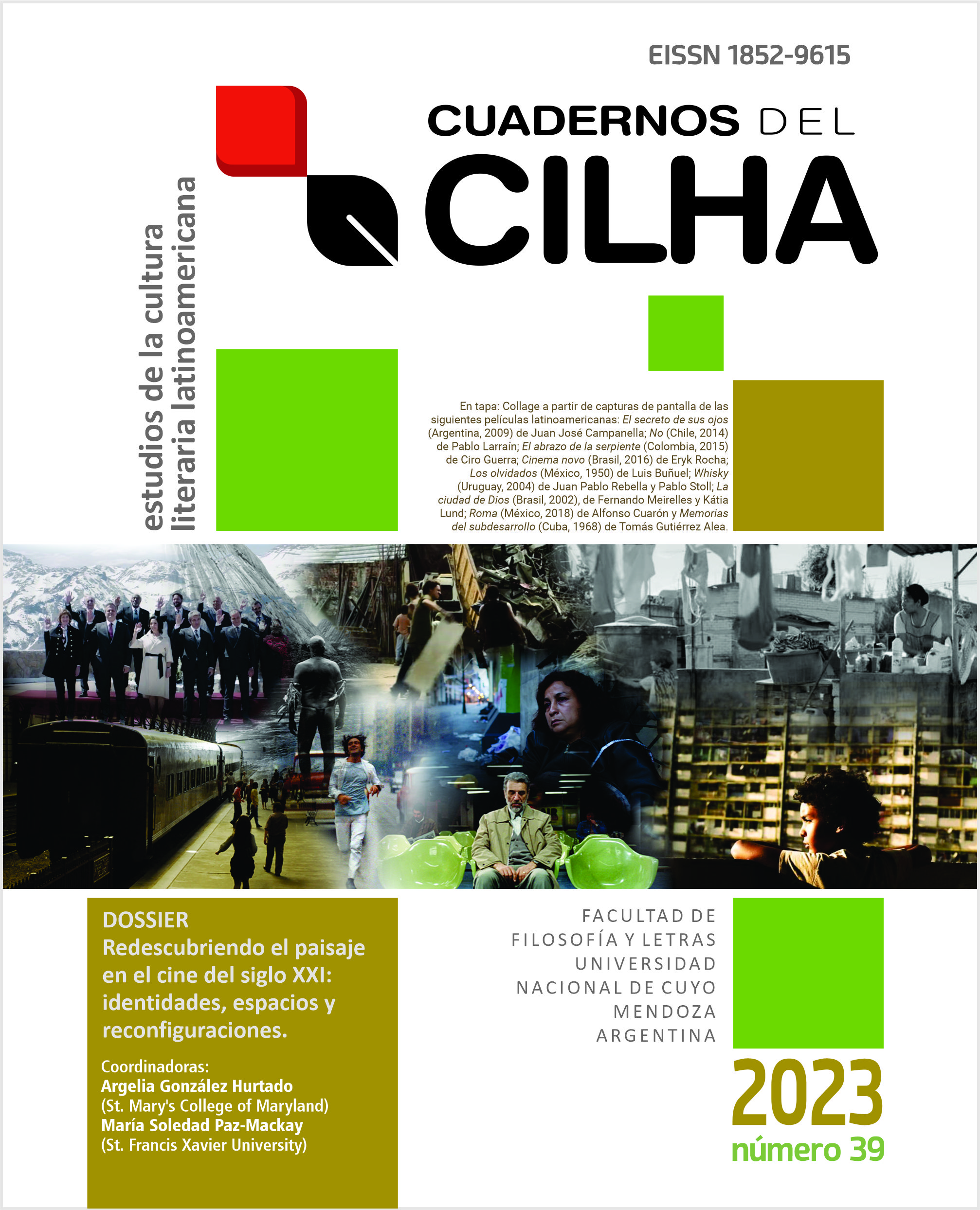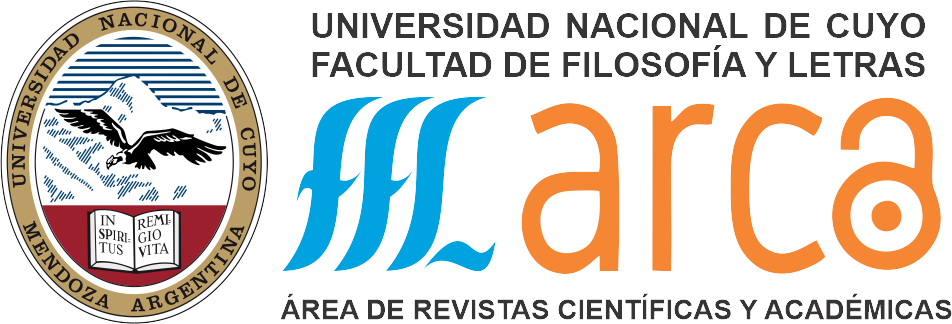Rubble, debris and ashes in the end of the Argentinean North Patagonian landscape.
A material analysis by Los muertos dos de Manque La Banca and Puyehue by Victoria Sayago and Bruno Stecconi
DOI:
https://doi.org/10.48162/rev.34.070Keywords:
landscape, contemporary cinema, new materialismsAbstract
In this paper we are interested in observing how two contemporary audiovisual works converse with materials present in the Argentinean North Patagonian territory. To do so, we will work from the philosophical perspective of the new materialisms, who put in crisis the modern epistemology, based on a binarism between the human and the non-human, between what is considered living and the inert, and propose us, instead, to take non-human materials as living beings, actants -in Bruno Latour's terms- with whom we can converse. In this sense, Jens Andermann (2018) proposes to think the end of landscape, since this concept presupposes an "objectification of the world, spiritualization of the observing subject." If the division between or among subject/object, activity/passivity enter into crisis, so does the landscape, as it has been understood from Western culture.
In the chosen audiovisuals, certain material features of the territory gain special prominence: in the hybrid work Los muertos dos (2016) by Manque la Banca, the spaces on the edge of the tourist landscape of the city of Bariloche, with its debris and waste, are recorded. And in the documentary Puyehue (2011) by Bruno Stecconi and Victoria Sayago, the protagonists are the ashes caused by the explosion of the Puyehue volcano that generated a socio-natural disaster in the region of northern Argentina in 2011. We will try to think about the relationship of these two films with a change in the contemporary aesthetic imaginary, which, as proposed by the researchers Paola Cortés Rocca and Luz Horne, is called the "material imagination" (2021).
References
Andermann, J. (2018). Tierras en trance Arte y naturaleza después del paisaje. Metales pesados.
Bennet, J. (2022). Materia vibrante. Una ecología política de las cosas. Caja Negra editora.
Cortés-Rocca, P. (2011). El tiempo de la máquina: retratos, paisajes y otras imágenes de la nación. Colihue.
Cortés-Rocca, P. y Porter, S. (2017). Vestigios del futuro. En Bruma (pp. 23-55). Larivière.
Cortés-Rocca, P. y Horne, L. (2021). La imaginación material. Restos, naturaleza y vida en la estética latinoamericana contemporánea. Estudios de Teoría Literaria. Revista digital: artes, letras y humanidades, 10.21, 4-15.
Depetris Chauvin, I. (2019). Geografías afectivas. Desplazamientos, prácticas espaciales y formas de estar juntos en el cine de Argentina, Chile y Brasil (2002-2017). Latin America Research Commons.
Gordillo, G. (2017). Escombros. La supervivencia de la destrucción. F. Rodríguez (Trad.). Siglo XXI.
Haraway, D. (1999). Las promesas de los monstruos: una política regeneradora para otros inapropiados
/bles. Trad. Elena Casado. Política y Sociedad, (30), 121-163.
Heffes, G. (2013). Políticas de la destrucción/Poéticas de la preservación. Beatriz Viterbo.
La Banca, M. (Director). (2016). Los muertos dos [Película]. Productora Parquee.
Latour, B. (2012). Esperando a Gaia. Componer el mundo común mediante las artes y la política [Conferencia]. Cuadernos de Otra parte: Revista de letras y artes, (26), 67-76.
Nichols, B. (1997). La representación de la realidad. Cuestiones y conceptos sobre el documental. Paidós.
Parikka, J. (2021). Una geología de los medios. Caja Negra. Buenos Aires.
Quintana, M. (23 de abril de 2015). Explotó el Calbuco. Revista Anfibia. http://revistaanfibia
.com/cronica/exploto-el-calbuco/
Romero Toledo, H. y Romero Aravena, H. (2015). “Ecología política de los desastres naturales: vulnerabilidad, exclusión socio-territorial y erupciones volcánicas en la patagonia chilena.” Magallania, 43(3), 7-2 Chile.
Roszak, T. (1981). El nacimiento de una contracultura. Reflexiones sobre la sociedad tecnocrática y su oposición juvenil. Editorial Kairós.
Sayago V. y Stecconi, B. (Directores). (2011). Puyehue [Película]. Productores Sayago y Stecconi.
Simmel, G. (1996). Filosofía del paisaje. Península.
Smithson, R. (2009). Robert Smithson: selección de escritos. Alias.
Vertov, D. (2011). Memorias de un cineasta bolchevique. Capitán Swing libros.





















